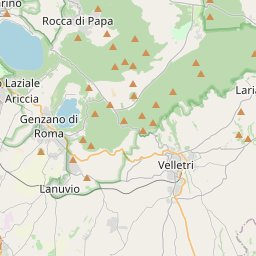Nemi
Nemi
The area where the village of Nemi is currently found used to belong in ancient times to the Latin town of Aricia. The real birth of a town identified as Nemi (from the Latin nemus, meaning a wood) can only be traced back to the IX century, corresponding to the time a castle was built for defence purposes.
The building was built by the powerful Counts of Tusculum family which dominated the territory of the Roman Castles in which Nemi was located also holding control of most of the Agro Romano. The castle was so imposing that in the documents of the time, references were often made to Nemi as castrum Nemoris, the town in the wood.
The site also enjoys a position of exceptional prestige, dominating the lake and impossible to attack from three sides. Following fortification of the town, the farming and fishing communities, originally spread through the valley of the lake, found it convenient and safer to move to the area close to the castle, gradually creating what later became the central nucleus of Nemi.
In 1090, the Frangipane family took over from the Counts of Tusculum for a short period, until, in 1153, the papacy handed over Nemi castle to the Cistercian monks. It took centuries for control of the town to return to the Frangipani, in 1503, and it was in that period that the noble family built the main public works and most important monuments of the historic borgo.
In 1781 the Frangipane sold Nemi to the nephew of Pope Pius VI, Luigi Braschi, who, thanks to the intercession of the pope, raised his new estate to a duchy. Due to its particular geographical position Nemi has always been one of the most secluded villages of the area of the Roman Castles, a fact that did not encourage commercial traffic.
Also the gradual abandonment of the postal route between Rome and Naples, following re-opening of the Via Appia Nuova in 1780, had a negative effect on the economy of the borgo. In spite of this, from the beginning of the 1800’s Nemi was able to benefit from the fame of its attractive and picturesque site; it was visited by many foreigners and illustrious people during the “Grand Tour” who chose this small medieval borgo alongside the lake as one of the legs of their journey.









